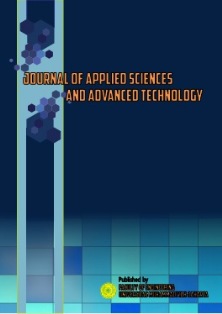Paving Block Investigation Using Waste Plastic, Used Oil, And Styrofoam with Different Variables
DOI:
https://doi.org/10.24853/jasat.4.1.1-6Keywords:
Paving Block, Waste Plastic, Waste Oil, StyrofoamAbstract
Paving block is a composition of building materials made from a mixture of portlandcement or similar hydraulic adhesives, which are components of building materials that are very commonly used. But besides that, the dependence on the use of cement as an adhesive for Paving Blocks is still high. Therefore, the solution taken is to use waste plastic, Styrofoam, and used oil as materials for making Paving Blocks. Based on the results of data processing, it can be concluded that the manufacture of paving blocks using a mixture of plastic, used oil, and styrofoam has several stages, namely the stages of preparing tools and materials, taking and collecting plastic waste, used oil , and styrofoam, heating stages, mixing stages, the printing stage, the release stage and the drying stage, and the laboratory testing stage. This study uses 6 comparisons of mixed materials. The results of the trial of making paving blocks using a good mixture of plastic waste and used oil, namely with a composition of 67%: 33% with an average compressive strength of 63.2 MPa and water absorption capacity of 2.4% entered into quality A used for roads while paving blocks with plastic waste materials, used oil, and styrofoam have the best compressive strength value, which is 26.0 MPa with a composition of 40%:50%:10% and the absorption power obtained is 5.2%. B quality is used for parking lots.Downloads
References
Aryanto, Riza Putra., “Daur Ulang Sampah Kertas HVS Dengan Metode Re-Pulping Sebagai Bahan Campuran Pembuatan Paving Block”, Institut Teknologi Yogyakarta.Yogyakarta, (2017).
Rahardja, I. B., & Ramadhan, A. I. (2019). Pemanfaatan Daun Nangka Kering Sebagai Tempat Alat Tulis Kantor (ATK). Jurnal Pengabdian Masyarakat Teknik, 2(1), 1-6.
Rahardja, I. B., Daraquthni, Z., & Ramadhan, A. I. (2019). Potential of Palm Oil Solid Waste as Steam Power Fuel (Case Study at XYZ Palm Oil Mill). Journal of Applied Sciences and Advanced Technology, 2(2), 33-38.
Badan Standardisasi Nasional, 1996, Paving Block: SNI 03-0691-1996. Jakarta: BSN.
Bambang, P dan Mining Harsanti.”Pengolahan Limbah Cair Tekstil Menggunakan Proses Elektrokoagulasi”, Jurnal Universitas Jendal Achmad Yani. Bandung (2010).
Lalu Syamsul Hadi,”Pemanfaatan Limbah Plastik Polyethylene Terepthalate (PET) Untuk Bahan Tambahan Pembuatan Paving Block”, Jurnal Univeritas Mataram, Vol. 1, No.1 (2016).
Rahardja, I. B., Rikman, R., & Ramadhan, A. I. (2018). Analysis of Heat Transfer of Fiber Mesocarp of Palm Oil (Elaeis Guineensis Jacq) as Roof Building. Journal of Applied Sciences and Advanced Technology, 1(1), 1-8.
Peraturan Pemerintah No. 81 Tahun 2012.Tentang Pengelolaan Sampah Rumah Tangga dan Sampah Sejenis Rumah Tangga.
Rahardja, I. B., Sukarman, S., & Ramadhan, A. I. (2019). Analisis Kalori Biodiesel Crude Palm Oil (CPO) dengan Katalis Abu Tandan Kosong Kelapa Sawit (ATKKS). Prosiding Semnastek.
Rahardja, I. B., Siregar, A. L., & Purwani, S. (2019). Pengaruh Jumlah Lubang pada Body Lori terhadap Perbandingan Oil Losses in Empty Bunch dan Oil in Condensate. Jurnal Citra Widya Edukasi, 11(3), 231-238.
Purwaningrum Pramiati.,”Upaya Mengurangi Timbulan Sampah Plastik Di Lingkungan”,JTL,Vol. 8 No.2, (2016).
Rahardja, I. B., & Masnia, M. (2021). The Optimization of Capacity Boiler Efficiency 26 Tons/Hours with Fuel Alumination and Statistical Product and Service Solutions (Spss) Analysis. ADI Journal on Recent Innovation, 2(2), 113-185.
Wirahadi Michelli,”Elemen Interior Berbahan Baku Pengolahan Sampah Styrofoam dan Sampah Kulit Jeruk”,JI,Vol. 5 No.2, (2017).
Rahardja, I. B., Dinary, R., & Ramadhan, A. I. (2019). Crystal Exergy Value (Wax) Crude Palm Oil (CPO) Influence Based On The Mixed Type. Journal of Applied Sciences and Advanced Technology, 1(3), 91-98
Downloads
Published
Issue
Section
License
COPYRIGHT POLICY
The author(s) of an article published in the Journal of Applied Sciences and Advanced Technology (JASAT) retains ownership of the intellectual property rights in work (s).
PUBLISHING RIGHTS
The author(s) of an article published in the Journal of Applied Sciences and Advanced Technology (JASAT) have unrestricted publication rights. The authors give the Journal of Applied Sciences and Advanced Technology (JASAT) the right to publish the article and designate the Faculty of Engineering Universitas Muhammadiyah Jakarta Publishing as the original publisher of the article.
LICENSING POLICY
JASAT is an open-access journal that follows the Creative Commons Non-Commercial 4.0 International License (CC BY-NC 4.0), which states that:

Under this license, the reusers must give appropriate credit, provide a link to the license, and indicate if changes were made. Users may do so in any reasonable manner, but not in any way that suggests the licensor endorses users or their use.
Please take the time to read the whole license agreement (https://creativecommons.org/licenses/by-nc/4.0/). As long as reusers follow the license conditions, the owner cannot withdraw these freedoms. The following components are included under this license:
 Attribution: Users must provide appropriate attribution, including a link to the license, and indicate whether or not they made any modifications. Users are free to do so reasonably, but not in a manner that indicates the licensee approves of their usage.
Attribution: Users must provide appropriate attribution, including a link to the license, and indicate whether or not they made any modifications. Users are free to do so reasonably, but not in a manner that indicates the licensee approves of their usage.
 NonCommercial: Users may not use the material for commercial purposes.
NonCommercial: Users may not use the material for commercial purposes.












_2.png)


1.png)

2.png)
